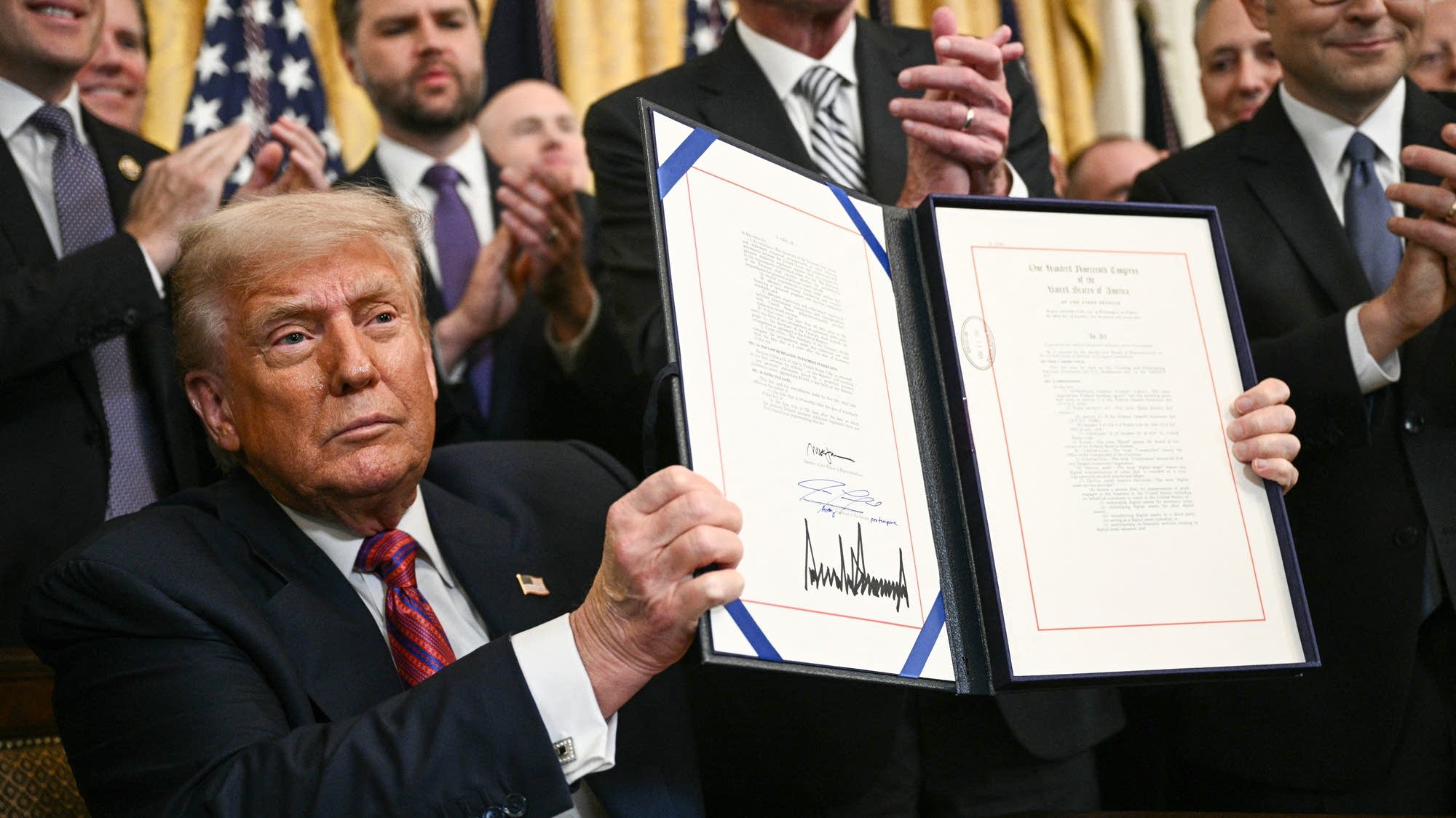On July 18, President Donald Trump signed into law the so-called “GENIUS Act,” which sets rules and guidelines for the cryptocurrency known as stablecoins. These are digital tokens with values pegged to the U.S. dollar, meaning they’re supposed to be less volatile than other forms of crypto.
The idea behind stablecoins is that they will become a more mainstream way to make payments and move money. Now, big banks like Citigroup and major retailers like Walmart are exploring ways to get a piece of the action.
For more about stablecoins, “Marketplace Morning Report” host David Brancaccio spoke with Stacy-Marie Ishmael, executive editor of crypto and digital payments at Bloomberg News. The following is an edited transcript of their conversation.
David Brancaccio: So stablecoin is a genre of cryptocurrency that’s hard pegged to the dollar — not supposed to fluctuate. Other than sounding crypto-cool — this is gonna be a hard question, Stacy-Marie, does stablecoin do anything for anyone?
Stacy-Marie Ishmael: The clue is in what you said about it being pegged to the U.S. dollar. A lot of other cryptocurrencies, famously, Bitcoin, for example, move a lot — 5%, 8%, 10% — in a day. Stablecoins are designed to stay steady at a given level. And for people who, for example, want to avoid currency fluctuations or who want to have access to the U.S. dollar, this is really attractive. So right now, I would say the most popular consumer-facing, real-world use case is things like remittances. So for folks who want to send money overseas, that’s a big use case for stablecoins right now.
Brancaccio: Well, let me just put it another way. If you want to buy an egg salad sandwich, you could use four dollar bills. But why stablecoins at all? Let’s say you wanted to do a remittance from a foreign country. Just use a dollar?
Ishmael: Well, not everybody has easy access to dollars, and the argument made by some of the folks that are trying to, I would say, innovate within stablecoins for remittances is, one, that the fees are a lot lower if you do it via stablecoin, and that it’s increasingly integrated into popular apps. So in the U.S., for example, PayPal has its own version of a stablecoin, and it’s pretty quick. In some cases, it’s instantaneous, whereas for more traditional forms of remittances, you can be looking at 48 hours, to up to five days, in some cases.
Brancaccio: Now you and I are talking at a moment when the biggest banks in the universe, including Bank of America, Citigroup, among others, based on changes brought about by the crypto-friendly Trump administration, are thinking about allowing stablecoin into regular accounts, like part of your regular bank account might include stablecoin?
Ishmael: The keyword there is might. Nobody is doing that at the moment, but it’s certainly one of the things being discussed. Because, again, the idea being pitched by these crypto companies is that they want this to be another accessible form of money in the same way that the dollar is. And for that to actually be true, you do need a way in the like retail branch banking or online banking context, to have this show up next to your accounts. And there is quite a lot of lobbying happening by various bank lobby groups to help make this possible.
Brancaccio: We should be clear: do you imagine a universe in the United States, where federal deposit insurance would cover a crypto account?
Ishmael: That is one of the more, I would say, contentious discussions now. I mean, we are actively in a regulatory environment in which you’re getting the feedback that you know crypto should be showing up in people’s retirement accounts, and it’s something that everybody should be exposed to and investing in. But the regulators themselves are looking at the risks, because this is, unlike the U.S. dollar, generally a more risky asset. And so, saying that the U.S. government will bail you out if something terrible happens to your crypto account is, for a lot of people, something they’re still trying to get their heads around about how that would work mechanically.







